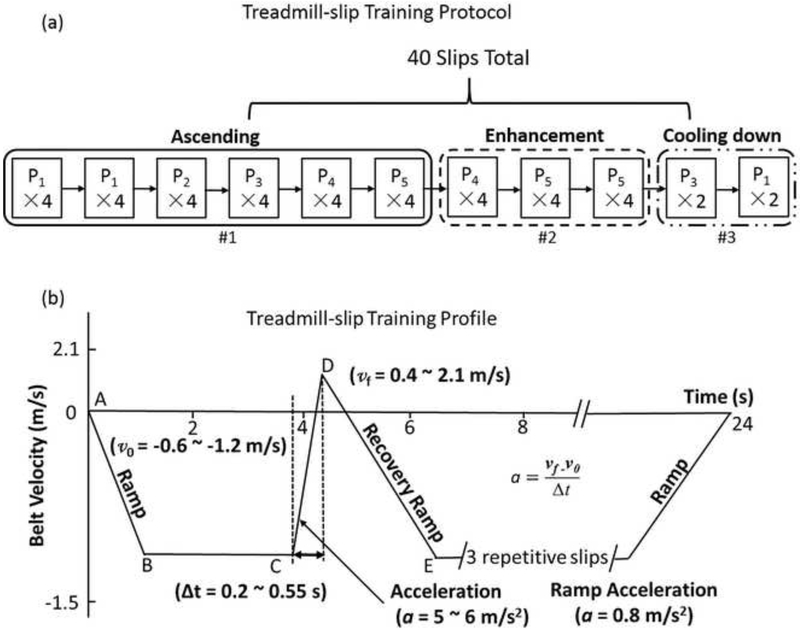Figure 4.
(a) The total 40 treadmill slips in the treadmill-slip perturbation training protocol were provided over 11 blocks of walking and their perturbation intensity underwent adjustments in three phases. The first phase was a stepwise increase in perturbation intensity (#1, Ascending phase). The second phase was designed to enhance the training effects with repetitive blocks of intensity (#2, Enhancement phase). The third phase was for cooling down (#3, Cooling down phase). P1-P5 indicated training profiles with varied perturbation intensity from lowest to highest as the number ascended. (b) The profile of one block of treadmill slips. Each slip on the treadmill began with 1.3-2 seconds ramping-up duration followed by three to five steps of steady state walking on a backward-moving belt at one of the preset speeds (−0.6 m/s, −0.8 m/s, −1.0 m/s or −1.2 m/s, negative sign indicated that the moving direction of the treadmill belt was opposite to the direction of participants’ COM). The preset speeds were selected by the participants as their most comfortable walking speed on the treadmill. Without any warning, the belt speed would abruptly reverse the direction (accelerating forward) to produce a single “slip-like” perturbation. The perturbation intensity of each training profile was determined by two factors, the acceleration of the belt (at two levels: 5 or 6 m/s2) and the duration of its application (ranged from 0.2-0.55 s). After each acceleration, the belt deaccelerated at 0.8 m/s2 to the previous steady-state walking speed. The next “slip” occurred following another three to five steps of steady-state walking. There was a total of two or four slips in each block.

